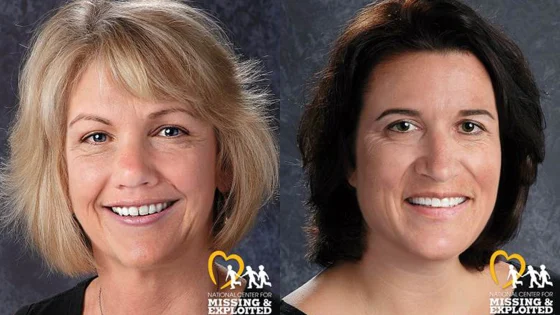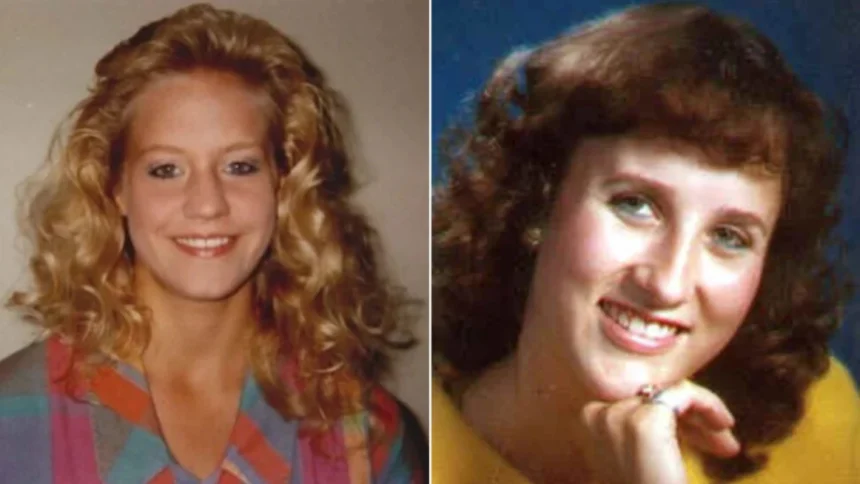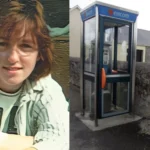On a spring night in 1988, two best friends from Carrollton, Texas—Susan Renee Smalley, 18, and Stacie Elisabeth Madison, 17—drove off in a bright yellow Mustang and never came back. What happened to them has haunted their families, classmates and an entire community for more than three decades.
Two Lives Full of Promise
Susan Renee Smalley was born on September 19, 1969. She was the type of student teachers loved—an honor-roll kid who worked hard and smiled often. At Newman Smith High School, she was known for being friendly and reliable.
After shifts as a hostess and waitress at the Steak and Ale restaurant, she dreamed about buying her own car and moving to Florida for a fresh start. “She was there for her friends at all times,” her brother Rich Smalley recalled later.
Her best friend, Stacie Madison, came into the world on June 17, 1970. Blonde hair, blue eyes and a bright smile made her stand out. She wasn’t just popular—she was also determined. Stacie worked as a receptionist for a local allergist while finishing her senior year.
College was already on her horizon; she planned to study business at the University of North Texas. Just hours before she disappeared, she had even taken her SAT exam. “Boys frequently called the house, begging to date her,” her mother Ida Madison remembered, according to Morbidology.
Two ambitious girls, two separate futures ahead of them. But on March 19, 1988, those futures were cut short in a way that still puzzles investigators.
The Last Night
Susan had decided to stay over at Stacie’s house that night. The girls got into Stacie’s yellow 1967 Ford Mustang convertible, painted in their school’s green and gold colors and drove out. Around midnight, Stacie called a friend from her house phone. That short call confirmed they were still at her home.
But not long after, the pair was seen at a 7-Eleven, trying to buy alcohol. They were turned down since both were underage. Later, Susan popped into her workplace—the Steak and Ale restaurant—just to say hi to a coworker.
She stayed inside for about five minutes while Stacie waited in the car. That was the last confirmed sighting of the girls alive.
And then—nothing.
The next morning, families began to worry. By Sunday, it was clear something was wrong. Both were reported missing. Police started looking, though at first, some thought the girls might have just run away.
Then came the chilling discovery: Stacie’s Mustang was found abandoned in Dallas, about seven miles from Carrollton. It was sitting in a lot at Forest Lane and Webb Chapel Road. The car was locked, jackets and a portable stereo still inside. But no girls, the NBC News reports.
Detectives missed their chance at vital clues. The Mustang wasn’t properly processed for evidence—no fingerprints lifted, no DNA collected. Later, Detective Greg Ward admitted, “I’m not saying they screwed up, but they probably could have handled it better.” That early mistake may have cost investigators the trail they needed.
Suspicions Close to Home

The most obvious suspect was someone close to Stacie—her boyfriend, Kevin Elrod. Their relationship was rocky and according to friends, she was trying to end things.
Shortly after the girls disappeared, Elrod reportedly confessed to another woman that he had killed Susan and Stacie and buried them in a cemetery near Carrollton. Police searched but they found nothing.
He later passed a polygraph test, though experts know lie detector results can’t always be trusted. Elrod eventually moved to Florida, changed his name and years later, his ex-wife took out a restraining order against him for threats. The cloud of suspicion around him never really went away.
Over the years, the case has been flooded with leads—most of them dead ends. People claimed to have seen the girls at drag strips, truck stops and even in other states. Each sighting raised hope, then faded into disappointment.
Police even consulted psychics at one point. John Catchings, a well-known local psychic, described a suspect as “a blonde white male with glasses, 28 to 34 years old” and claimed the girls’ bodies were near Grapevine Lake. Searchers combed the area. Nothing, per Wikipedia.
Psychics, rumors, supposed sightings—it all blurred into frustration. The truth stayed just out of reach.
Families Left in the Dark
The hardest part wasn’t the mystery—it was the waiting. Stacie’s father, Frank Madison, became a one-man search party. He plastered photos of his daughter around town and asked strangers for tips. He died in 1996, never knowing what happened.
Susan’s mother, Carolyn Audett, clung to hope even years later. “Even today, there’s still a little bitty glimmer of hope that she could walk back into my life,” she told NBC News.
For both families, hope and grief mixed in a way that never fully faded.
In 2009, something unusual happened. A Carrollton native named Shawn Sutherland self-published a book called This Night Wounds Time. It retold the girls’ story and brought fresh eyes to the cold case.
That book sparked a new round of investigation. “The book caused the investigation to be renewed starting from scratch,” explained Sergeant Joel Payne of the Carrollton Police. Detectives pulled out old files, rechecked leads and tried again.
Authorities also began releasing age-progressed images of the girls, hoping someone might recognize them or come forward with information.
Walk into Newman Smith High School and you’ll find a stone monument dedicated to Susan and Stacie. It stands as a reminder that two classmates never came home.
The Carrollton Police still keep the case open. After all these years, investigators believe even the smallest tip could finally crack the mystery.
Let’s dig into the legal side of polygraph tests.
Are Polygraph Results Admissible in Court?
If you’ve ever watched a crime show, you’ve probably seen the tense scene where a suspect is hooked up to a machine with wires on their chest and fingers answering questions while the needle on the paper jumps up and down.
That’s the famous polygraph test, better known as the lie detector. It looks dramatic, it feels scientific and in pop culture, it’s almost always treated like the ultimate truth-telling device. But here’s the thing—courts don’t see it that way.
Polygraphs measure stuff like heart rate, blood pressure, breathing and how sweaty your palms get. The idea is that if someone lies, their body reacts in ways they can’t control.
Sounds neat, right? The problem is, human bodies are complicated and stress doesn’t always mean deception. That’s why the legal world has been fighting for decades about whether these tests should ever be allowed in courtrooms.
Let’s break it down.
The Rules That Shape What Gets In
When lawyers talk about whether evidence should be admitted, they usually go back to big legal standards. For polygraphs, two names pop up over and over: the Frye standard and the Daubert standard.
The Frye standard came first. It basically said: if the scientific community doesn’t widely accept it, courts shouldn’t either. Since polygraphs never had full support from scientists, they were usually kept out.
But then in 1993, the Supreme Court dropped a major decision in Daubert v. Merrell Dow Pharmaceuticals. This ruling gave judges more flexibility, calling them the “gatekeepers” of scientific evidence. Instead of asking “is this accepted everywhere?” the Daubert standard asked, “is this reliable and relevant enough to help the jury?”
That shift opened the door a little but not much. Even with Daubert, most federal and state courts still slam the brakes on polygraph results. Unless both sides—prosecution and defense—agree to let the test in (that’s called a stipulation), or unless the test meets some very strict scientific conditions, it doesn’t get in front of a jury.
Why so strict? Because judges worry that juries might put too much faith in a machine that isn’t as foolproof as TV makes it seem.
When Lawyers Actually Agree
Here’s where things get interesting. Sometimes, both sides in a case will agree to let the polygraph results in. This is the stipulation I mentioned earlier. Think of it like a legal handshake—“we both trust this test enough to let the jury see it.”
When that happens, courts might say okay, but there are rules. The evidence has to be relevant (that’s Federal Rule of Evidence 401) and it can’t be overly prejudicial (that’s Rule 403). If those boxes are checked, the polygraph might actually make it into the trial.
But let’s be real—lawyers don’t always agree. And when they don’t, judges often go right back to excluding the results.
There are some exceptions though. States like New Mexico have been more open to polygraphs. In New Mexico, for example, the Supreme Court decided polygraph results could come in even without a stipulation, as long as they meet tough evidentiary rules. That makes New Mexico one of the rare places where these tests actually stand a chance in a courtroom.
The Credibility Problem
Polygraphs aren’t just about science—they’re also about credibility. And in law, credibility is a touchy subject. Under Federal Rule of Evidence 608, you can only bring in evidence of someone’s truthful character if their credibility has already been attacked.
Translation: you can’t just use a polygraph to say, “Look, this person is telling the truth.” You can only use it after the other side questions their honesty.
Then there’s Rule 702, which covers expert testimony. If you’re going to use a polygraph, you need an expert who can back it up with reliable data. That means the examiner has to be qualified, the methods have to be solid and the results have to actually help the jury. That’s a high bar and most polygraphs don’t clear it.
Why Scientists and Judges Don’t Buy It
So, why the resistance? For one, studies show polygraphs aren’t all that reliable. The error rates can swing wildly depending on who’s running the test, what method they use and what kind of questions are asked. A nervous but innocent person might “fail,” while a calm liar could “pass.”
Critics call out the danger of false positives (labeling truth-tellers as liars) and false negatives (missing lies). That’s scary stuff in a courtroom where freedom—or even life—can be on the line.
Judges worry about something else too: juries. If a jury sees “scientific” results on a screen, they might give them more weight than they deserve. Courts want to avoid misleading jurors, so many simply keep polygraphs out altogether.
As one appellate court once put it, letting in polygraph evidence risks “confusing rather than assisting the jury.” And in law, clarity matters more than theatrics.
Are New Technologies Changing the Game?
Polygraphs today aren’t exactly the same as they were in the past. The machines have gotten more advanced, the techniques more refined and some experts claim accuracy has improved. A few courts and scholars say maybe it’s time to rethink the blanket ban.
In fact, the Eleventh Circuit Court of Appeals has hinted that with proper safeguards—like stipulations and strong expert testimony—polygraphs could play a bigger role in trials. Still, that’s far from the norm. For now, the “no polygraphs” rule remains strong across most of the U.S.
Here’s where things flip. In civil and labor cases, the rules can be looser. Judges in those courts have more discretion to let polygraph results in if they think the information is useful. That means in disputes like workplace issues, a polygraph might actually show up.
But even then, it’s up to the judge and many are still skeptical. Some admit them, some don’t. It’s a mixed bag depending on the jurisdiction and the judge’s take on reliability.
Polygraphs are one of those strange pieces of technology stuck between science and storytelling. They make for gripping TV but in actual courtrooms, they’re still fighting for a place at the table. Until the science becomes bulletproof—or judges change their minds—the lie detector will keep living in that gray zone between investigation tool and courtroom outsider.




